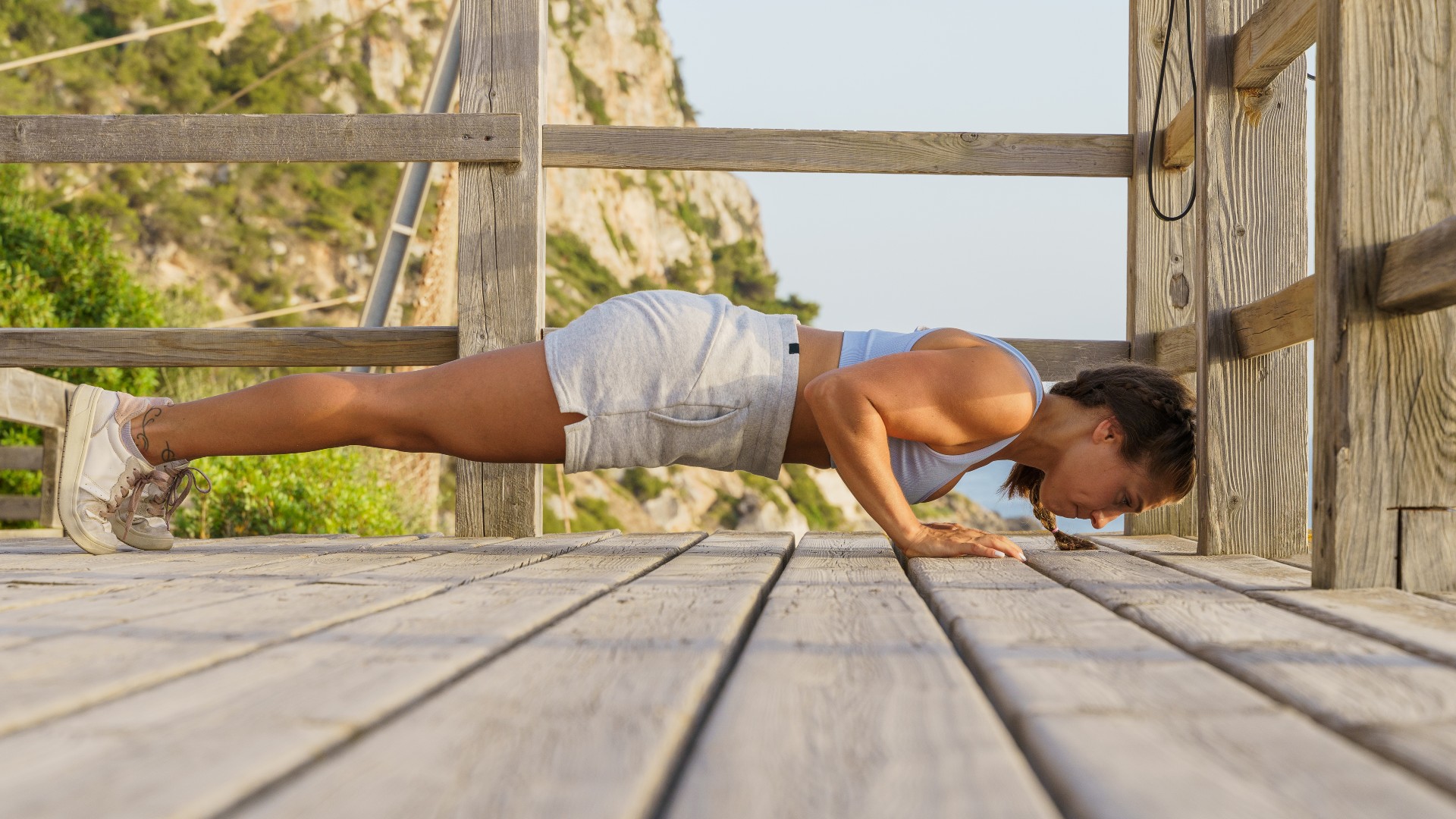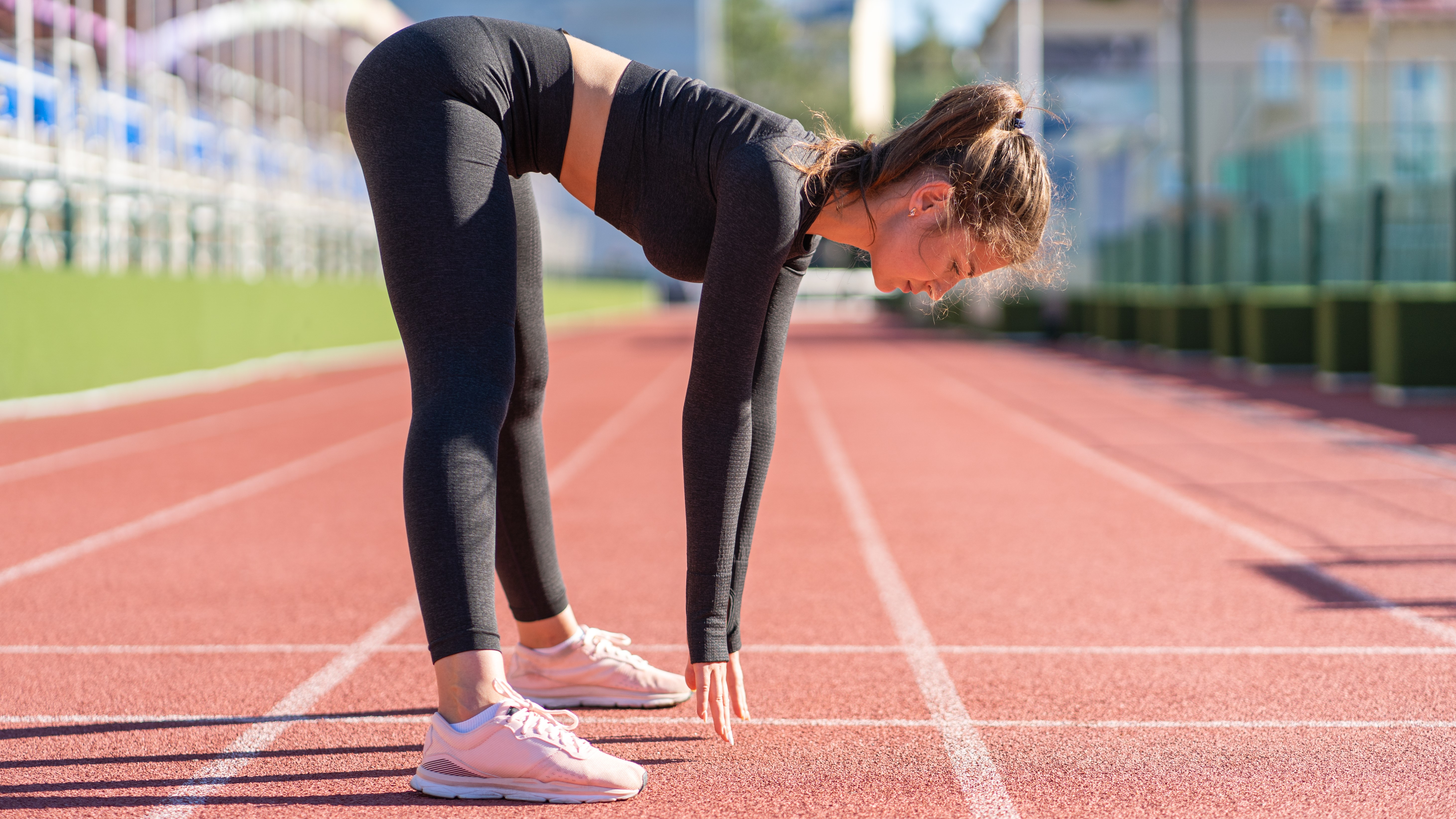
Recently, I crossed over to the not-so-dark side and put down my barbells in favor of an exercise routine I never thought I’d take up in my lifetime — reformer Pilates.
It’s not that I hate reformer — I think it’s great, but I’ve just never really enjoyed it. However the change of heart all started when I was experiencing personal stress, and the thought of heading to my local CrossFit gym suddenly felt a little overwhelming.
I always tell clients to listen to their bodies, especially in times of stress, and it turns out mine was telling me it didn’t want high-impact exercise right now. With that in mind, I listened and decided to switch to lower intensity for a while (more on that another time) and Pilates felt like a natural and positive switch.
What I’m getting to is that I found a few new exercises that I hadn’t experienced before, and one of those exercises is the Pilates push-up. Now, like every movement in the fitness world, I’m sure there are many variations out there, but this one is killer on the upper body and great for spine mobility.
Here’s how to do it, and why I’ve been specifically swapping out planks and standard push-ups in favor of them. It's time to roll out one of the best yoga mats and give it a try.
How to do Pilates push-ups
Aligned Pilates posted the above demonstration video a few years ago, when I was in the thick of barbell snatching rather than mat work.
In the video, Carmen says the Pilates push-up usually occurs at the end of mat work, and can be started whenever you feel strong enough to put weight on your wrists.
Get instant access to breaking news, the hottest reviews, great deals and helpful tips.
Here's how to do it:
- Stand with your feet roughly hip-width apart
- Lift your arms overhead
- Round through your spine until your hands meet the mat
- Softly bend the knees if you prefer
- Pull the stomach in and up and allow your head to hang
- Walk out for four counts on your hands into the push-up position
- “Pull in” by pushing through your hands and broadening through your upper back while drawing your belly button in — you’ll create rounding through your torso
- On your tiptoes, walk your hands back in, then press your heels down and try to flatten your hands
- Roll up to stand, raising your arms overhead, then circle your arms to lower by your sides.
Once you’ve performed a few rounds, add the push-up by bending your elbows and lowering your chest toward the ground. Gradually increase the number of push-ups you can do in this position before walking back in.
Carmen explains that she can’t reach her chest to the ground, but she keeps her elbows close to her body and spine lengthened throughout, lowering as far as her strength allows. Over time, you should find your chest gets closer to the floor, which is what we want to ideally see during push-ups.
What are the benefits?

There’s a triple whammy effect of the Pilates push-up: firstly, the rolling stretch targets the spine and the back of the body as you roll down to the floor and back up again while standing, which is a brilliant way to mobilize the spine and stretch the lower back and hamstrings.
Next, you can add the benefits of inchworms, which activate your core muscles and stretch the hamstrings as you walk in and out of the high plank position.
From the plank, you’ll benefit from the upper-body strengthening effects of the push-up, which targets the front of the shoulders (the anterior deltoids), pectorals and triceps, especially with the narrow arm position. Your core also works here to keep the body (particularly the hips) stable and spine long while you move your chest up and down.
In other words: full-body benefits. It’s one move, but it has the power to stretch, strengthen, lengthen and activate.
Why am I swapping in the Pilates push-up?
I would use push-ups as an accessory to perhaps my row or bench press in the gym during a strength program. But given I’ve been looking to nourish my body with gentler movement recently, this is the perfect way to add push-ups to my routine while moving more slowly and rhythmically. It allows me to take my time, spend a few breaths in each position and slowly add reps to the push-ups.
Moreover, I get to use the Pilates push-up either as a cool-down or warm-up drill to activate my whole body before an upper-body focused workout, moving my spine, legs and arms through a proper range of motion that helps open and stretch.
I particularly like the reach of the fingertips to the ceiling while standing, which feels like the type of stretch you do when you first wake up in the morning, then the release in my mid to lower back as I roll down and touch my fingertips to the floor, moving into my tight and sore hamstrings.
Then, I still get to strengthen my upper body using the inchworm, plank and push-up positions, just with a little extra juice to squeeze. During this part of the exercise, I focus on purposely scooping my belly inward and drawing my shoulder blades apart to hollow out my upper body and generate tension in my core, which feels more active than it would during standard push-ups, making this feel more like a core exercise, too.
Want to give it a try? Follow the video above closely for the comprehensive step-by-step instructions.
More from Tom's Guide
Follow Tom's Guide on Google News to get our up-to-date news, how-tos, and reviews in your feeds. Make sure to click the Follow button.
- New study reveals cycling can reduce dementia risk by 88%
- No, not sit-ups — strength and conditioning coach says ‘this is the best abs exercise you’re probably not doing’
- I tried slow running every day for 2 weeks, and I'm hooked

Sam Hopes is a level 3 qualified trainer, a level 2 Reiki practitioner and fitness editor at Tom's Guide. She is also currently undertaking her Yoga For Athletes training course.
Sam has written for various fitness brands and websites over the years and has experience across brands at Future, such as Live Science, Fit&Well, Coach, and T3.
Having coached at fitness studios like F45 and Virgin Active and personal trained, Sam now primarily teaches outdoor bootcamps, bodyweight, calisthenics and kettlebells.
She also coaches mobility and flexibility classes several times a week and believes that true strength comes from a holistic approach to training your body.
Sam has completed two mixed doubles Hyrox competitions in London and the Netherlands and finished her first doubles attempt in 1:11.
You must confirm your public display name before commenting
Please logout and then login again, you will then be prompted to enter your display name.

